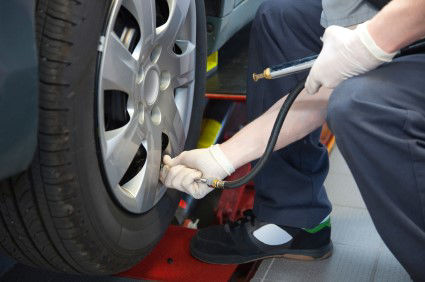NHSA Blog
Blog posts of '2022' 'April'
6 Ways your car may be trying to warn you

Vehicles are more prepared than ever to detect issues before they become bigger problems. Understanding the signs and warnings your car is giving you will save both time and money and help you be a safe driver and avoid unnecessary distractions.
1 Warning lights
Most of the time warning lights are reminders for very minor maintenance items. Sensors for tire pressure or oil usually take very little effort to correct. Other warning lights such as “Check Engine” may require you to visit your mechanic for diagnosis.
2 Temperature Gauges
A vehicle requires a variety of fluids to work properly. Normally, these fluids will heat up while driving, and the temperature gauges will show a normal range for the temperature of the fluids to stay within. If you notice the gauges moving into the red it is time to get this diagnosed before it causes an expensive problem.
3 Fluid levels
Fluids such as engine coolant and power steering fluid can last for years. Oil can last thousands of miles. Changes in these fluid levels earlier than expected may indicate your engine is developing a problem. An occasional top off of such fluids is one thing, but if you regularly notice any of these fluid levels dropping below normal levels, schedule time for your mechanic to take a look.
4 Unusual Sounds
Engines have parts that may be moving at thousands of RPMs (revolutions per minute). Parts can easily wear over time due to friction. Friction will often make noise that may help you determine what and where the problem may be. Is the noise under the hood or does it seem to come from the wheels? Is it high-pitched like a squeak? Or is it lower like humming? These details can help a professional to properly address the issue.
5 Vibrations
Vibrations, such as the shaking of your steering wheel may reveal a wheel alignment issue or that the tires are out of balance. This type of shaking is normally felt between a particular range of highway speeds. Shaking of the car felt at very low speeds such as when coming to a stop may reveal weaknesses in one or more tires. Tire safety is essential to safe driving practices.
6 Fumes
The last thing you need while driving is to smell burning fumes. A sudden aroma of fumes may indicate a problem with hoses or connections within the engine. More visible signs of fumes such as smoke or very strong odors should be addressed immediately.
Our goal at NHSA is to help all drivers to be safe drivers. Check out our online driver’s ed courses that include parent-taught classes for teens seeking their learner’s permit as well as defensive driving and basic driver safety courses aimed at saving you money. We are here to help!
3 Easy steps to avoid distractions while driving

According to statistics kept by the NHTSA, approximately 3,000 people die each year as a result of distractions while driving. Limiting distractions while driving is a key component of being a safe driver. The listed items below will help take proactive steps to reduce the risks.
1. Don’t use your phone while driving!
Our devices have become an extension of our bodies. Many people cannot go for very long without using their devices. Using a safe driving setting on your phone will prevent alerts from getting your attention and avoid the impulse to pick up the phone.
2. Limit activity within the vehicle.
Passengers and pets can be very distracting to a driver. Keeping noise and activity within the vehicle to a reasonable level will prevent your attention from being taken off of your driving.
3. Stay disciplined.
There are countless factors outside the vehicle that can pull our eyes away from the road. Billboards, wildlife, scenery, pedestrians, and other drivers can easily divert our focus if we allow them to. Keeping disciplined and only looking momentarily before focusing back on the road will prevent something we see from becoming something we are staring at.
At NHSA, we want to help all drivers to be safe drivers. Check out our online driver’s ed classes and basic driver safety courses to see how we can help you as well

Tips for driving safely at night
Car accident fatalities are three times more likely to take place at night, according to research done by the National Highway Transportation Safety Administration, or (NHTSA). Taking a few steps will help to reduce your risks while driving at night.
1. Keep your vision clear.
Visual perception has a significant effect on reaction times. You can ensure better reaction time while driving at night by doing the following:
- * Keep your windshield clean
- * Keep headlights properly aimed
- * Get your eyes examined each year
- * Avoid looking directly at the headlights of other drivers
2. Slow down.
You cannot see as far ahead at night as you can during the day. Give yourself more time to react by driving a few miles an hour slower. Setting the cruise control can help to avoid accelerating without realizing it.
3. Avoid impairments to your driving.
Driving while drowsy and driving after drinking alcohol are two of the most common factors in driving fatalities. Be modest, if you are feeling the effects of fatigue, either pull over to a safe place to have a brief rest or allow another passenger to drive. In addition, having a designated driver who has not consumed any alcohol is always the safest practice.
At NHSA, we want to help all drivers to be safe drivers. Check out our online driver’s ed classes and basic driver safety courses. From teen drivers seeking a learner's permit, to mature drivers seeking to save on car insurance, see how we can help you as well!

Safe driving tips when renting a vehicle
If you are renting a vehicle, you are likely on vacation or at least need a vehicle other than yours for some purpose. The following tips will help make sure you are prepared in advance for factors that could put you at greater risk of an incident.
Get familiar with the rental vehicle’s features.
Likely, the rental vehicle will not be the make and model of your vehicle. This means that the location of controls for basic functions may not be in the exact location you are used to. Controls for temperature, defogging, headlights, and hazard lights can be needed abruptly. Taking your eyes off the wheel for a moment to find such controls while driving can lead to serious risks. This is especially true if you rent a moving truck or tow a vehicle.
Set anything that needs to be adjusted to you before driving.
Adjust the side mirrors and the rearview mirror as needed. Next, take a moment to look around to look for potential blind spots.
Know where you are going.
We all know what it feels like to get lost while driving. It also takes extra focus to be looking for landmarks or street signs along your way. If you are planning a trip to an unfamiliar location, make sure you have looked at the route in advance to have a general idea of what you need to do. Many who rely on a navigation system are still prone to making a mistake because they are unfamiliar with the route taken.
At NHSA, we want to help all drivers to be safe drivers. Our online driver's ed courses are designed for the needs of any driver. Teen drivers can get ready to qualify for their learner's permit or enroll in a parent taught driving course. Experienced drivers can take basic driver safety classes to remove points from their driver's license or to reduce auto insurance rates. We are here to help!

